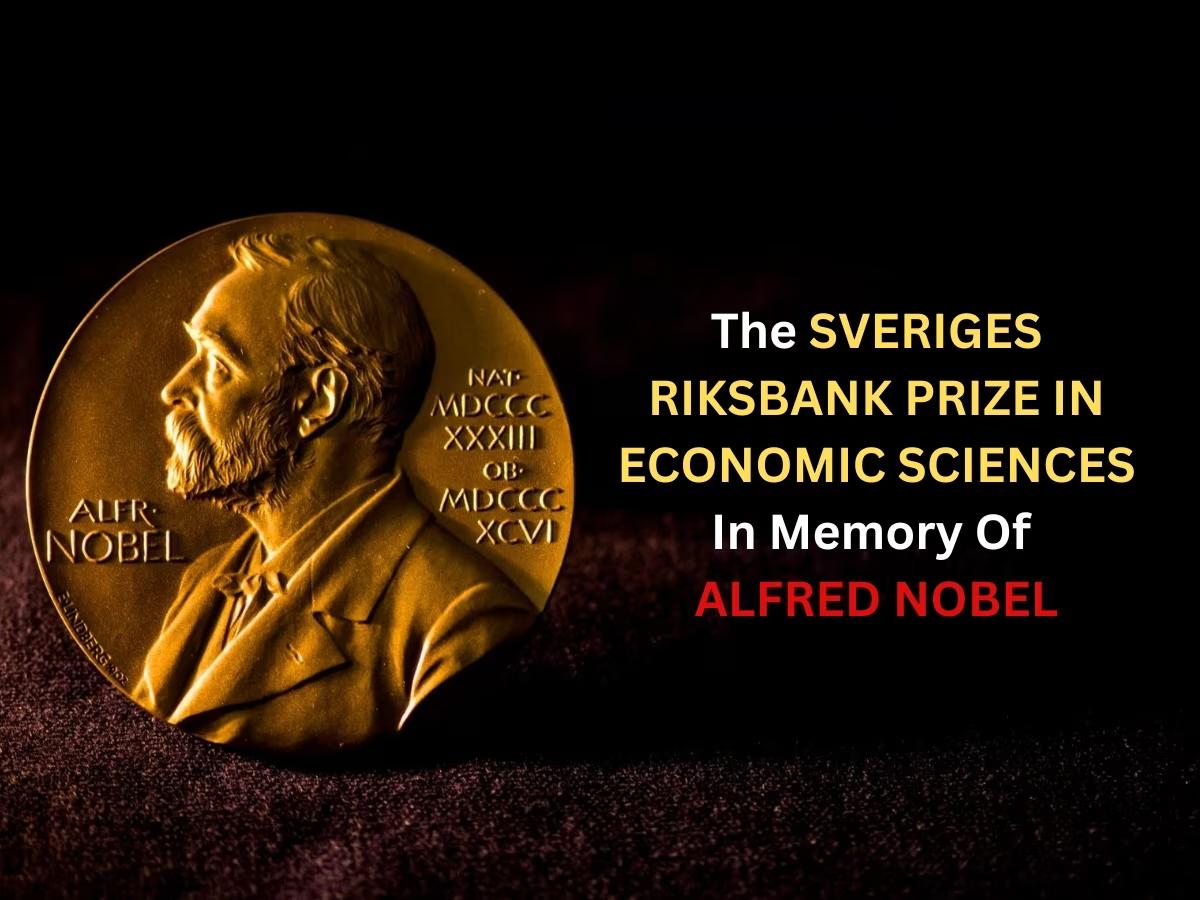Economy
2023 Nobel Prize in Economic Sciences
- 10 Oct 2023
- 6 min read
For Prelims: 2023 Nobel Prize in Economic Sciences, Gender Gap in the Labor Market, Industrialization, Gender Pay Gap, Contraceptive Pills.
For Mains: 2023 Nobel Prize in Economic Sciences, Indian Economy and issues relating to planning, mobilization of resources, growth, Development and Employment.
Why in News?
Recently, the Nobel Prize in Economics for 2023 has been awarded to Claudia Goldin, a Harvard University professor, for research that has advanced the understanding of the Gender Gap in the Labor Market.
- Goldin is only the third woman to win this honor. In 2009, Elinor Ostrom got the award along with Oliver E Williamson, while in 2019, Esther Duflo shared it with Abhijit Banerjee and Michael Kremer.
What is the Nobel Prize in Economic Sciences?
- The Nobel Prize in Economic Sciences was established in 1968 by the Sveriges Riksbank (the central bank of Sweden) in memory of Alfred Nobel, the inventor of dynamite and the founder of the Nobel Prizes.
- It is officially called the Sveriges Riksbank Prize in Economic Sciences in Memory of Alfred Nobel.
- Unlike the original Nobel Prizes in fields like physics, chemistry, medicine, literature, and peace, which were established by Nobel's will, the Nobel Prize in Economic Sciences is not one of the original Nobel Prizes.
- The prize was established later to honor outstanding contributions to the field of economics.
- The Prize recognizes individuals or organizations for their exceptional research, discoveries, or contributions that have advanced the understanding of economics and its application to real-world problems.
Why has Claudia been Chosen for the Nobel Prize in Economic Sciences?
- Claudia Goldin:
- Goldin has been a pioneer in studying the role of women in the economy and has written several books on the topic, such as Understanding the Gender Gap: An Economic History of American Women (Oxford, 1990), and Career & Family: Women’s Century-Long Journey toward Equity (Princeton University Press, 2021).
- Claudia’s Work:
- Goldin had provided “the first comprehensive account of women’s earnings and labour market participation through the centuries.
- Her research reveals the causes of change, as well as the main sources of the remaining gender gap.
- Goldin’s path breaking work has shed light on the participation of women in the labour market over the past 200 years, and why the pay gap between men and women refuses to close even as many women are likely to be better educated than men in high-income countries.
- While her research focused on the US, her findings are applicable to many other countries.
- Findings of Claudia’s Research Related to Women’s Participation in Workforce:
- Historical Perspective: Before Industrialization, women were more likely to be involved in economic activities related to agriculture and cottage industries.
- However, with the rise of industrialization and factory-based work, women faced difficulties leaving their homes to work.
- Role of the Services Sector: In the early 20th century, the growth of the services sector played a pivotal role in women's access to higher education and employment opportunities.
- This sector offered more opportunities for women to enter the workforce.
- Marriage Barriers: By the beginning of the 20th century, while around 20 % of women were gainfully employed, the share of married women was only 5 %.
- Goldin noted that legislation known as “marriage bars” often prevented married women from continuing their employment as teachers or office workers.
- Despite an increasing demand for labour, married women were excluded from parts of the labour market.
- Role of Expectations and Career Choices: Women's expectations about their future careers played a significant role in the Gender Pay Gap.
- Women's career decisions were influenced by the experiences of their mothers, leading to choices that did not necessarily prioritize long, uninterrupted, and fruitful careers.
- Role of Contraceptive Pills: The availability of easy-to-use contraceptive pills by the end of the 1960s allowed women to exercise greater control over childbirth and plan their careers and motherhood.
- This led to more women studying subjects like law, economics, and medicine and entering various fields of employment.
- Role of Parenthood in Pay Gap: Despite improvements in education and employment opportunities for women, a significant gender-based pay gap persisted.
- Initial earnings differences between men and women were small. However, once the first child arrived, women's earnings fell, and they did not increase at the same rate as men's earnings, even if they had similar education and professions.
- Parenthood played a role in the widening pay gap.
- Historical Perspective: Before Industrialization, women were more likely to be involved in economic activities related to agriculture and cottage industries.







